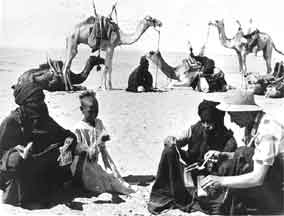1983 Northern Chad Captured By Libyans and Rebels

Chad
Libya continued its involvement in Chad. The government requested and received aid from both the U.S. and French governments.
Northern Chad, with its vast desert landscapes and strategic significance, has been a focal point of regional tensions and geopolitical ambitions for decades. The involvement of Libya in Chad's internal affairs, especially during the late 20th century, was marked by a series of military interventions and territorial claims. One of the most significant episodes of this involvement was the capture of northern Chad by Libyan forces and their allied Chadian rebel factions.
Under the leadership of Muammar Gaddafi, Libya sought to expand its influence in the Sahel region. Gaddafi's ambitions were not solely territorial; they were also rooted in his desire to lead a Pan-African and Pan-Arab movement. Chad, with its rich deposits in the Aouzou Strip and its position as a neighboring state, became a primary target for Libyan expansionism.
Throughout the 1970s and 1980s, Libya made several incursions into Chad, often justifying its actions on the grounds of supporting Chadian rebels opposed to the central government in N'Djamena. These rebels, depending on the shifting political landscape of Chad, would at times ally themselves with Libyan forces in hopes of gaining power.
In one of the most significant episodes of this intervention, Libyan troops, in collaboration with their Chadian rebel allies, managed to capture a vast portion of northern Chad. This was not a mere border skirmish; it was a significant military operation that saw the establishment of Libyan bases and the deployment of thousands of troops. The Aouzou Strip, believed to be rich in uranium and other minerals, became a particular point of contention, with Libya formally annexing the territory in 1976.
 >
>